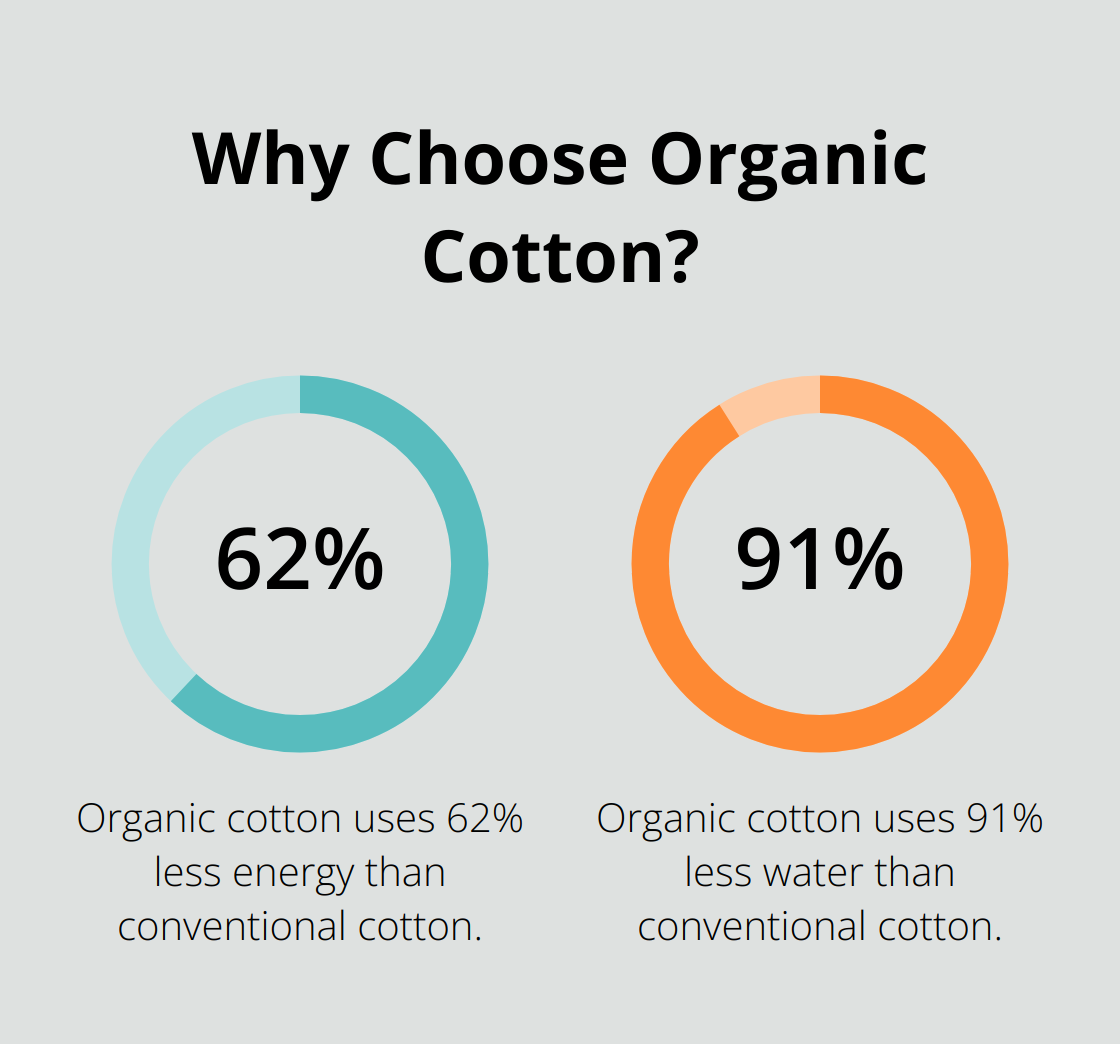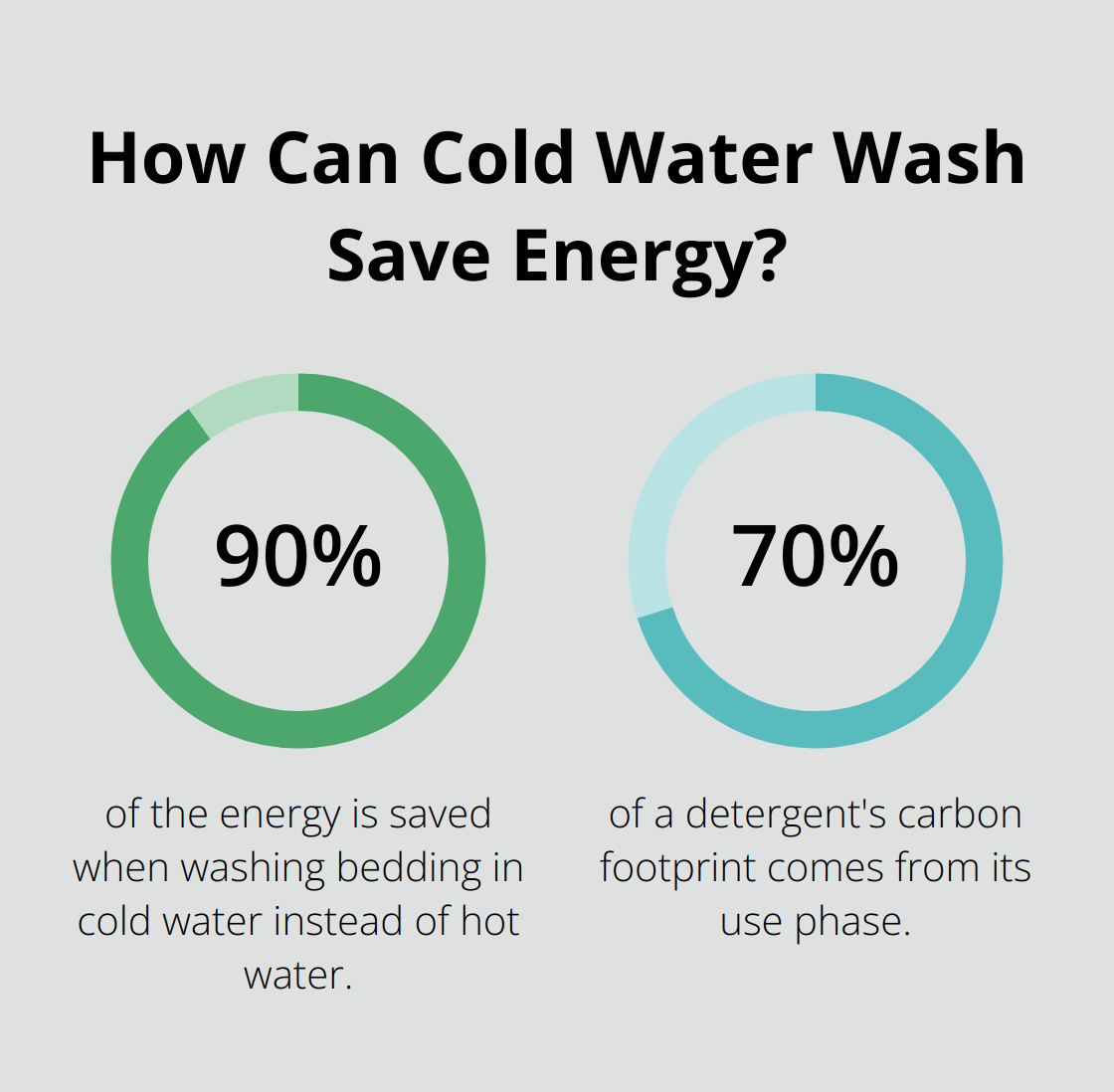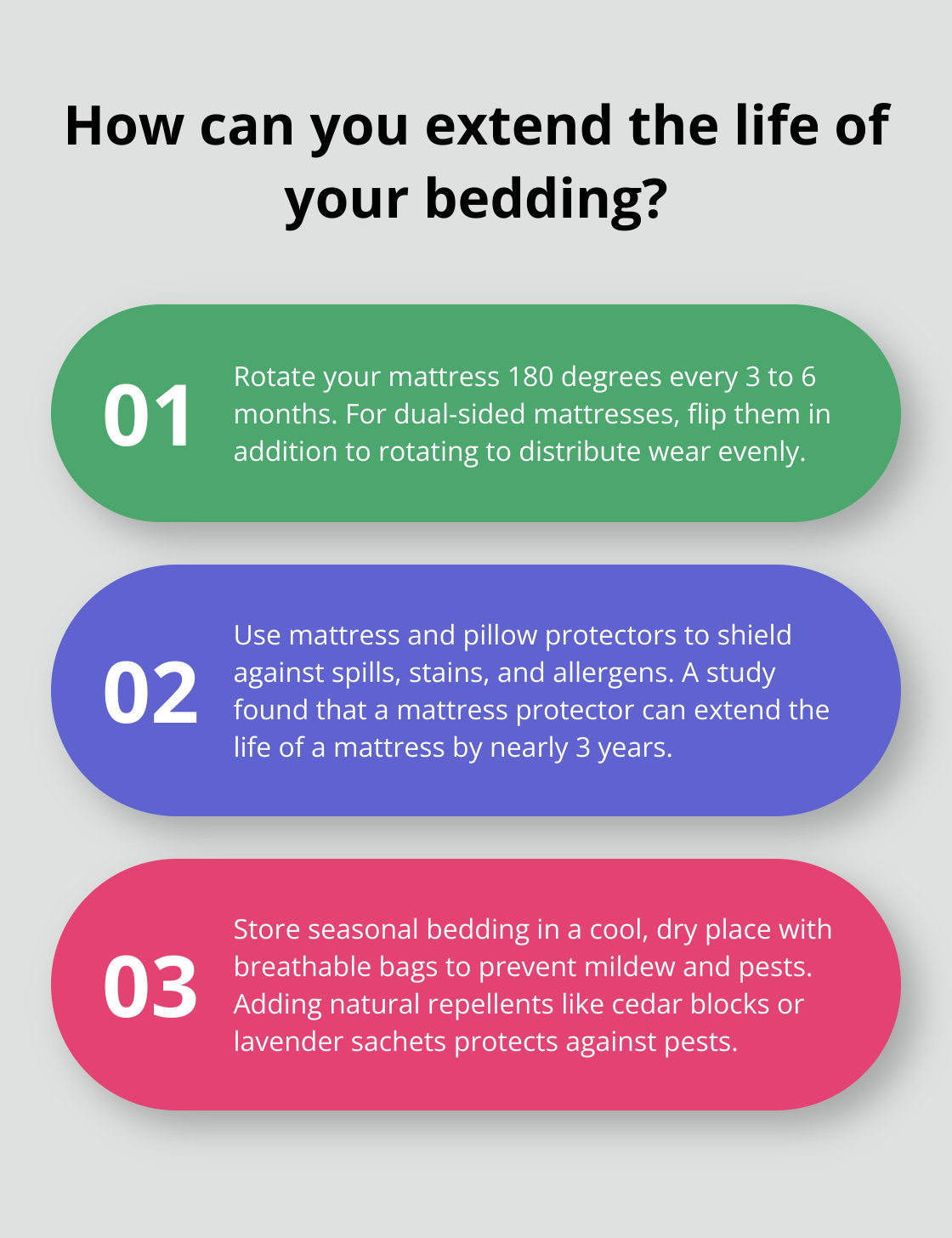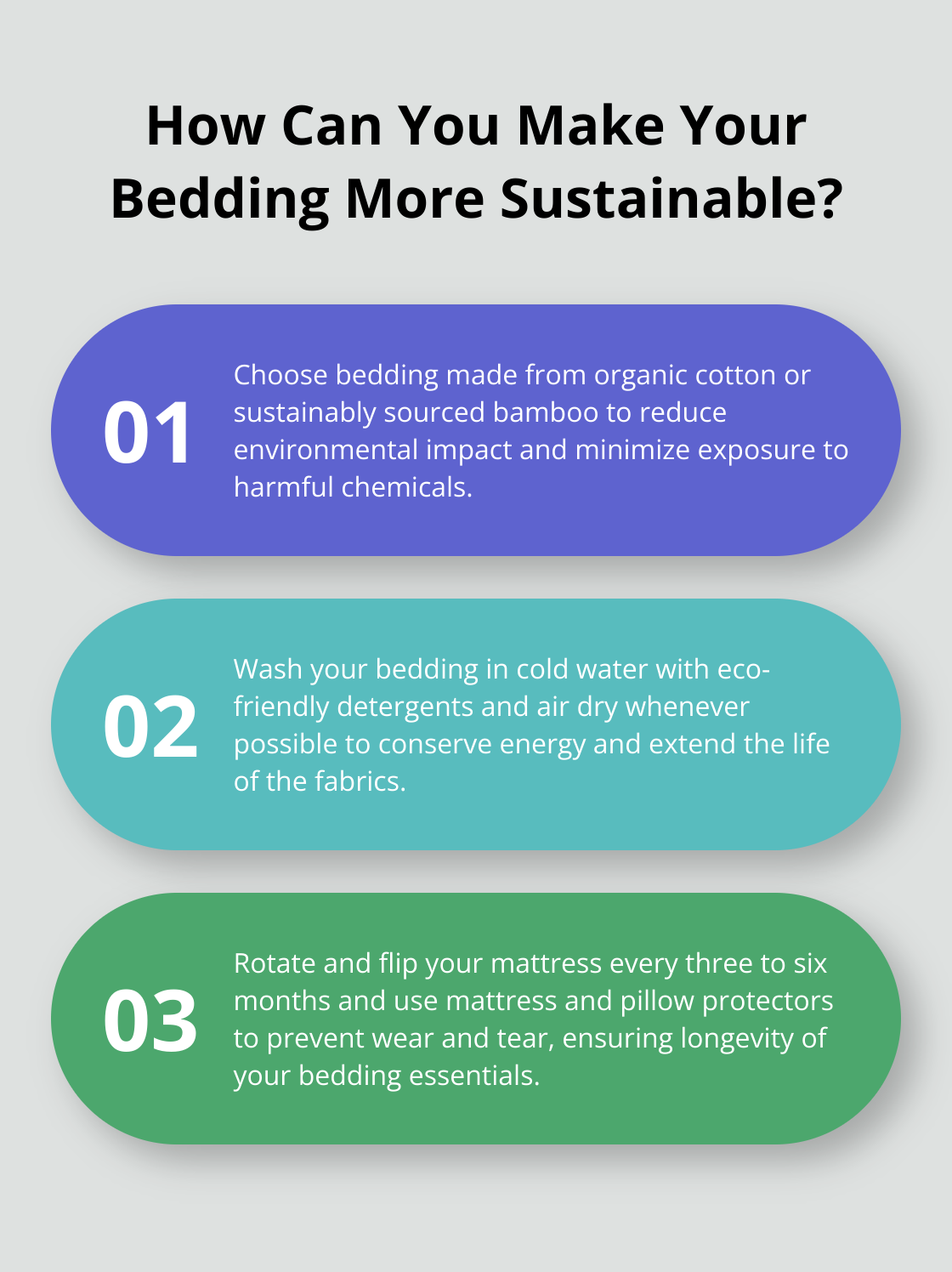Caring for your bedding sustainably can make a significant difference for both the environment and your wallet. Simple changes in how you choose, wash, and store your bedding can extend its life and reduce your ecological footprint.
At The A Team Cleaning Services, we believe in promoting eco-friendly practices for a cleaner planet. Let’s explore how you can make your bedding habits more sustainable.
What Are Sustainable Bedding Materials?
Organic Cotton and Bamboo
Organic cotton and bamboo are excellent choices for sustainable bedding. Organic cotton uses 62% less energy and 91% less water than conventional cotton. It’s free from synthetic pesticides and is healthier for both the environment and the people who farm it. Bamboo, on the other hand, grows quickly without needing fertilizers or pesticides, and its fibers are naturally hypoallergenic and moisture-wicking.

When shopping for organic cotton, look for labels like Global Organic Textile Standard (GOTS). For bamboo, ensure it’s sourced sustainably, avoiding bamboo rayon which is chemically treated.
Recycled and Upcycled Fabrics
Recycled and upcycled fabrics contribute significantly to sustainability. By choosing bedding made from recycled materials, you reduce waste and the demand for virgin resources. Some companies recycle PET bottles into polyester fibers for bedding, which keeps plastics out of landfills.
Additionally, upcycled fabrics repurpose existing materials, reducing the need for new textiles. These options often come with a unique aesthetic and a story of sustainability, making them both stylish and eco-friendly.
Certifications to Look For
Certifications are vital in identifying genuinely sustainable bedding. The Global Organic Textile Standard (GOTS) is one of the most reputable. It not only certifies that the fibers are organic but also ensures environmentally and socially responsible manufacturing processes.
Another important certification is OEKO-TEX Standard 100, which tests for harmful substances in textiles. Products with this label have been tested and proven to be free from harmful chemicals, making them safe for both the environment and your health.
Finally, look for the Fair Trade certification, which ensures that the workers who produce your bedding are treated fairly and work under good conditions. This certification supports ethical production methods and contributes to social sustainability.
For more on sustainable living practices, you might find green cleaning certifications interesting. Sustainable choices go beyond what you sleep on, impacting your entire lifestyle.
Eco-Friendly Washing Practices
Using Cold Water and Eco-Friendly Detergents
Washing bedding in cold water can save up to 90% of the energy typically used in hot water washes. Cold water is effective for cleaning linens, especially with advancements in detergent formulations. Opt for eco-friendly detergents that are biodegradable and free from phosphates and synthetic fragrances. A study by the American Cleaning Institute found that 70% of a detergent’s carbon footprint comes from its use phase, emphasizing the importance of choosing green products.
Washing Less Frequently
Frequent washes cause wear and tear on bedding, diminishing its lifespan. According to laundry experts, washing sheets every 2-3 weeks is sufficient for most households. This practice not only conserves water but also extends the life of your linens. For households with allergies or pets, weekly washes might be necessary to manage allergens, but always weigh the need against environmental impact.
Air Drying vs. Machine Drying
Air drying is one of the most sustainable ways to care for your bedding. It reduces energy consumption significantly and extends the life of fabrics by minimizing abrasion caused by tumble drying. According to the U.S. Department of Energy, air drying can cut a typical household’s carbon footprint by 2,400 pounds of CO2 annually. For those who must use a dryer, choose a low heat setting and consider using wool dryer balls to reduce drying time and static.

For more tips on eco-friendly home practices, see our guide on eco-friendly cleaning gadgets suitable for beginners. Implementing small changes can lead to significant environmental benefits over time.
How to Extend the Life of Your Bedding
Extending the life of your bedding not only saves money but also promotes sustainability. Simple practices like rotating your mattress, using protectors, and storing seasonal bedding properly can make a significant difference.
Rotating and Flipping Mattresses
Rotating and flipping your mattress regularly is essential. Mattress experts recommend rotating your mattress 180 degrees every three to six months. This practice evenly distributes wear and prevents sagging. For dual-sided mattresses, flipping in addition to rotating can further extend their lifespan. Consistency in these steps ensures that your mattress offers optimal support and comfort for years.
Using Mattress and Pillow Protectors
Utilizing protectors on your mattress and pillows is a game-changer. These protective barriers shield against spills, stains, dust mites, and allergens. High-quality protectors are often water-resistant and breathable, enhancing comfort while safeguarding the lifespan of your bedding. A Consumer Reports study found that using a mattress protector can extend the life of a mattress by nearly three years. Opt for machine-washable protectors to maintain hygiene easily.
Proper Storage of Seasonal Bedding
Seasonal bedding, such as heavy winter comforters or lightweight summer linens, needs proper storage to maintain its quality. Store these items in a cool, dry place away from direct sunlight. Use breathable storage bags made from cotton or linen to prevent mildew and allow airflow. Adding natural moth repellents like cedar blocks or lavender sachets can protect against pests. By correctly storing seasonal bedding, you preserve its condition and avoid unnecessary replacements.

For additional tips on keeping your living space eco-friendly, refer to our guide on quickly refreshing your home. Small, sustainable choices in home care can collectively make a big impact.
Next, let’s explore best practices for purchasing sustainable bedding, ensuring you make choices that are both eco-friendly and economical.
Conclusion
Sustainable bedding care involves choosing eco-friendly materials, adopting mindful washing practices, and extending the life of your linens through proper care. Organic cotton, bamboo, recycled, and upcycled fabrics offer environmentally conscious options that are both durable and comfortable. Washing with cold water, using eco-friendly detergents, and air drying can significantly lower your energy usage. Proper storage and protection methods further contribute to sustainability by prolonging the lifespan of your bedding.

Implementing these sustainable practices offers multiple benefits. Not only do you reduce your carbon footprint, but you also promote a healthier living environment by avoiding harmful chemicals and allergens. Eco-friendly habits can lead to cost savings and ensure that your bedding remains in excellent condition for years to come.
Adopting sustainable bedding practices is a step toward a greener lifestyle, contributing positively to our planet and your well-being. To maintain a pristine and eco-friendly home without the hassle, consider our professional house cleaning service. We use professional-grade products and equipment to deliver a spotless, fresh environment tailored to your needs. Visit our website for more information on how we can help you achieve a sustainable home.
